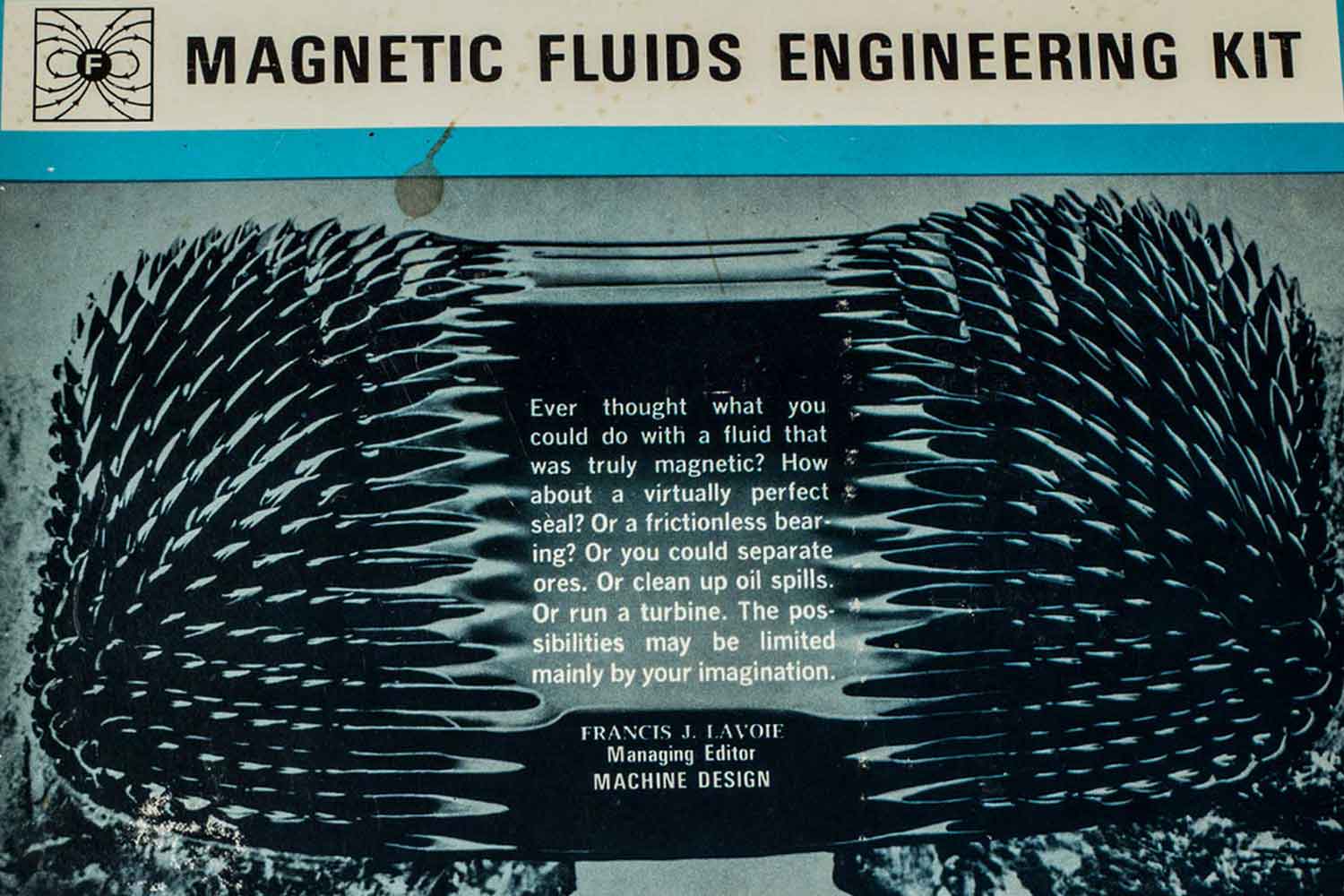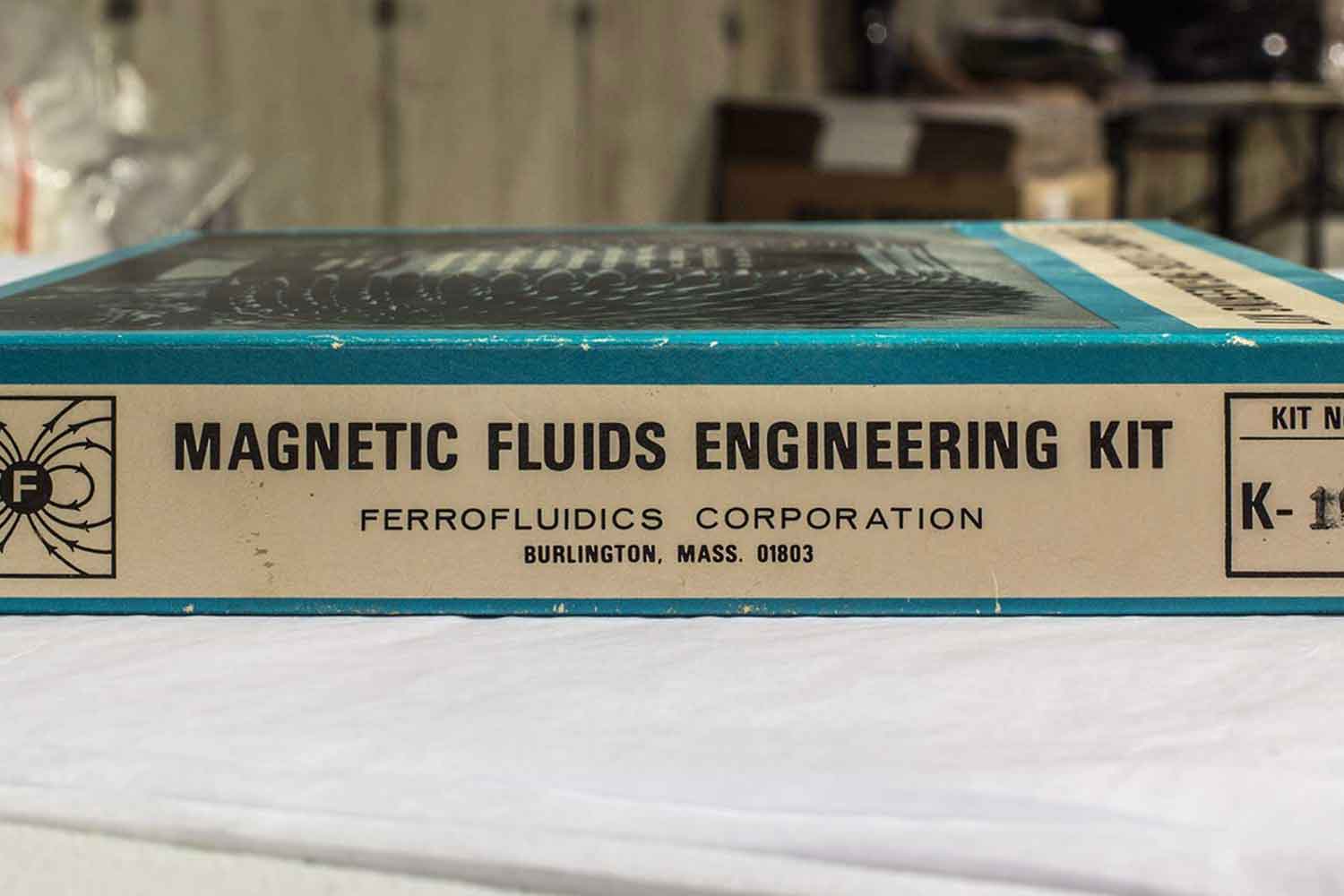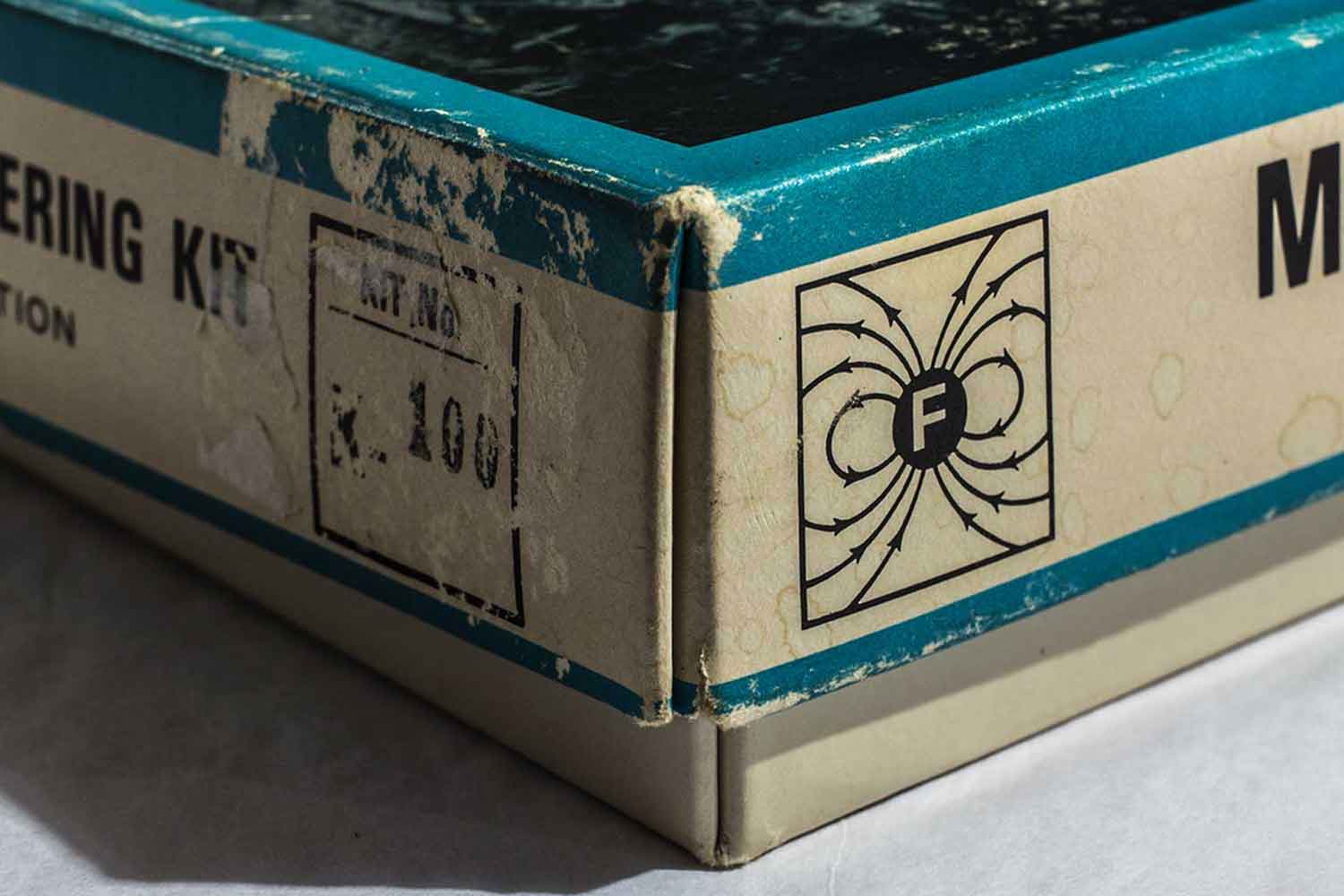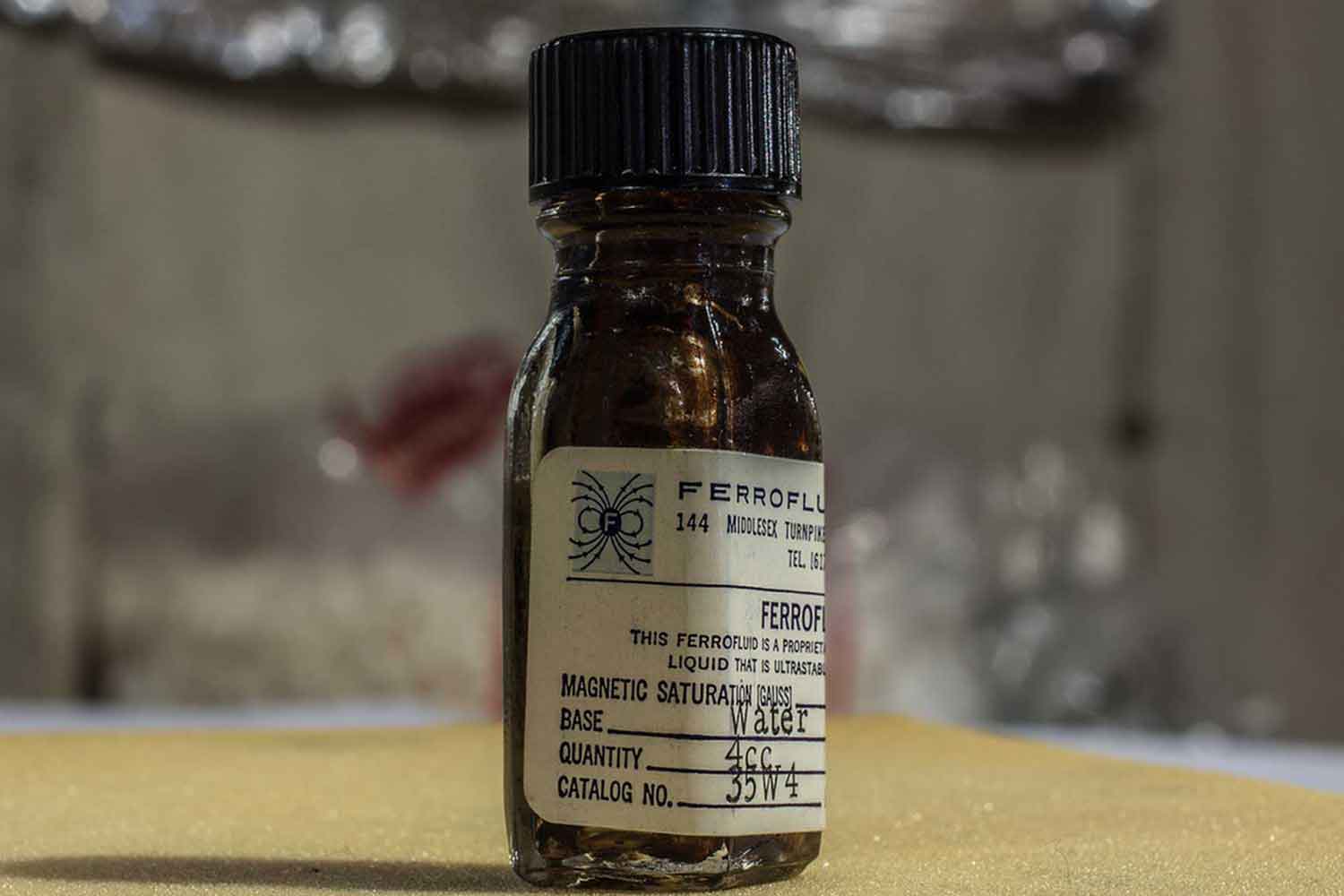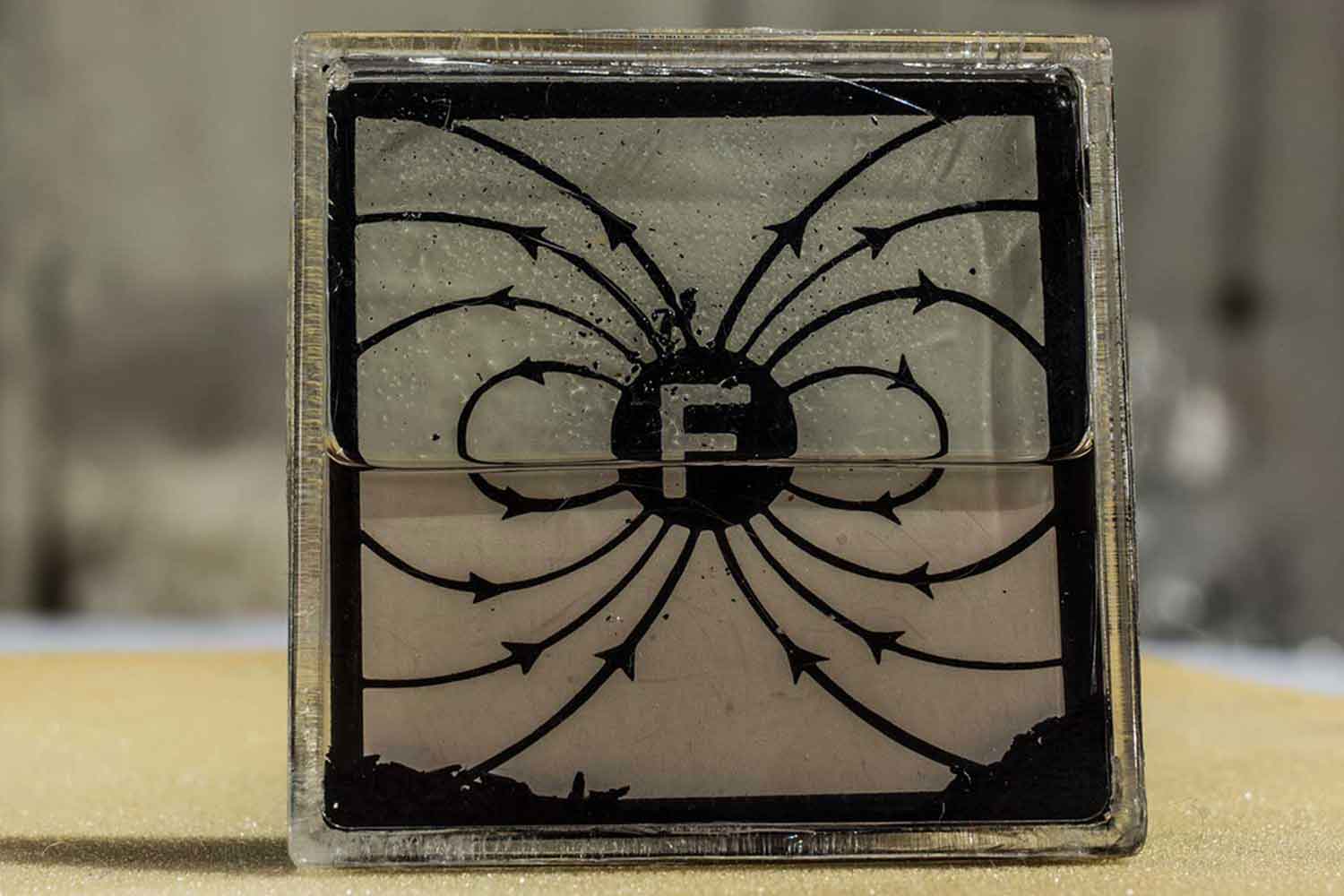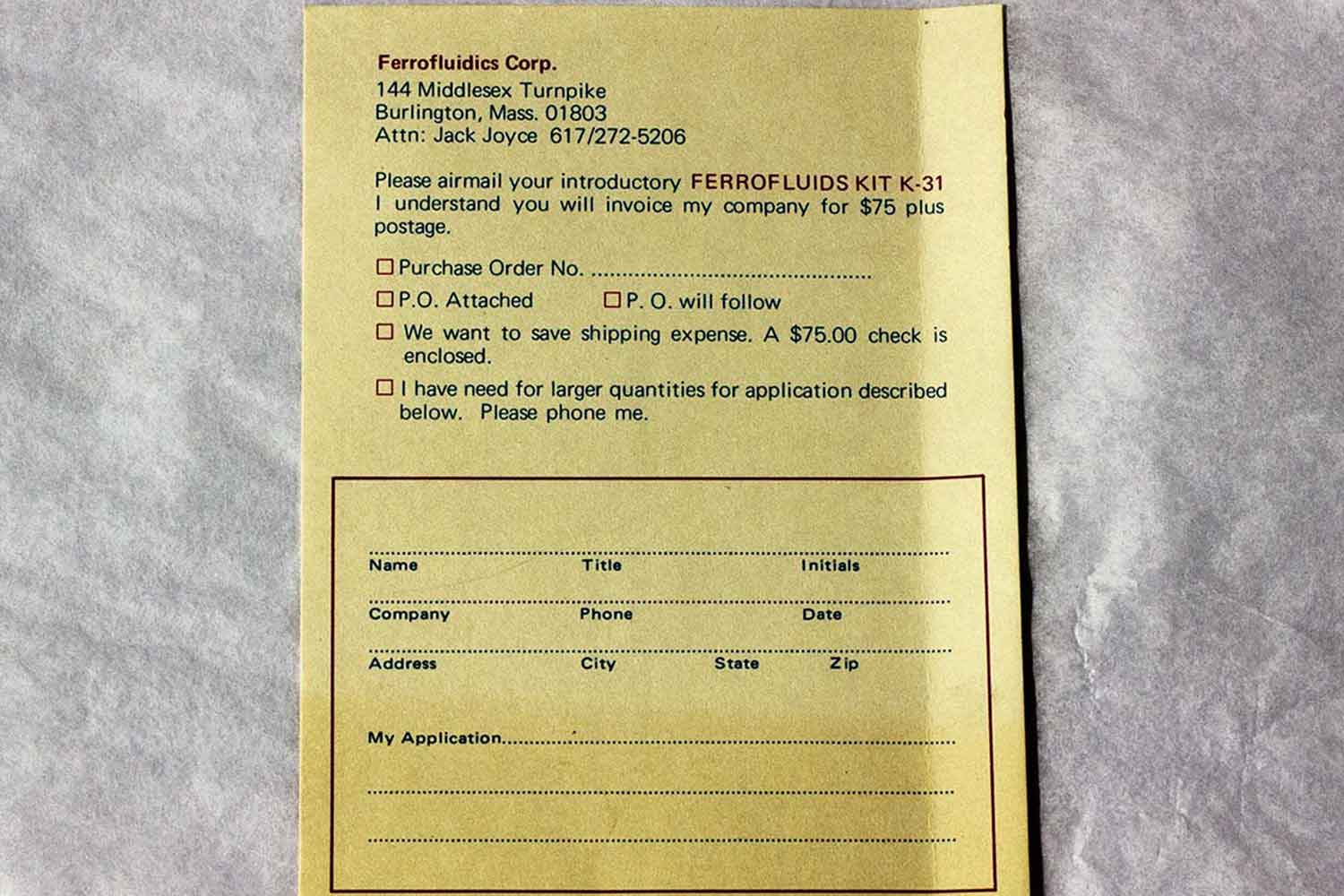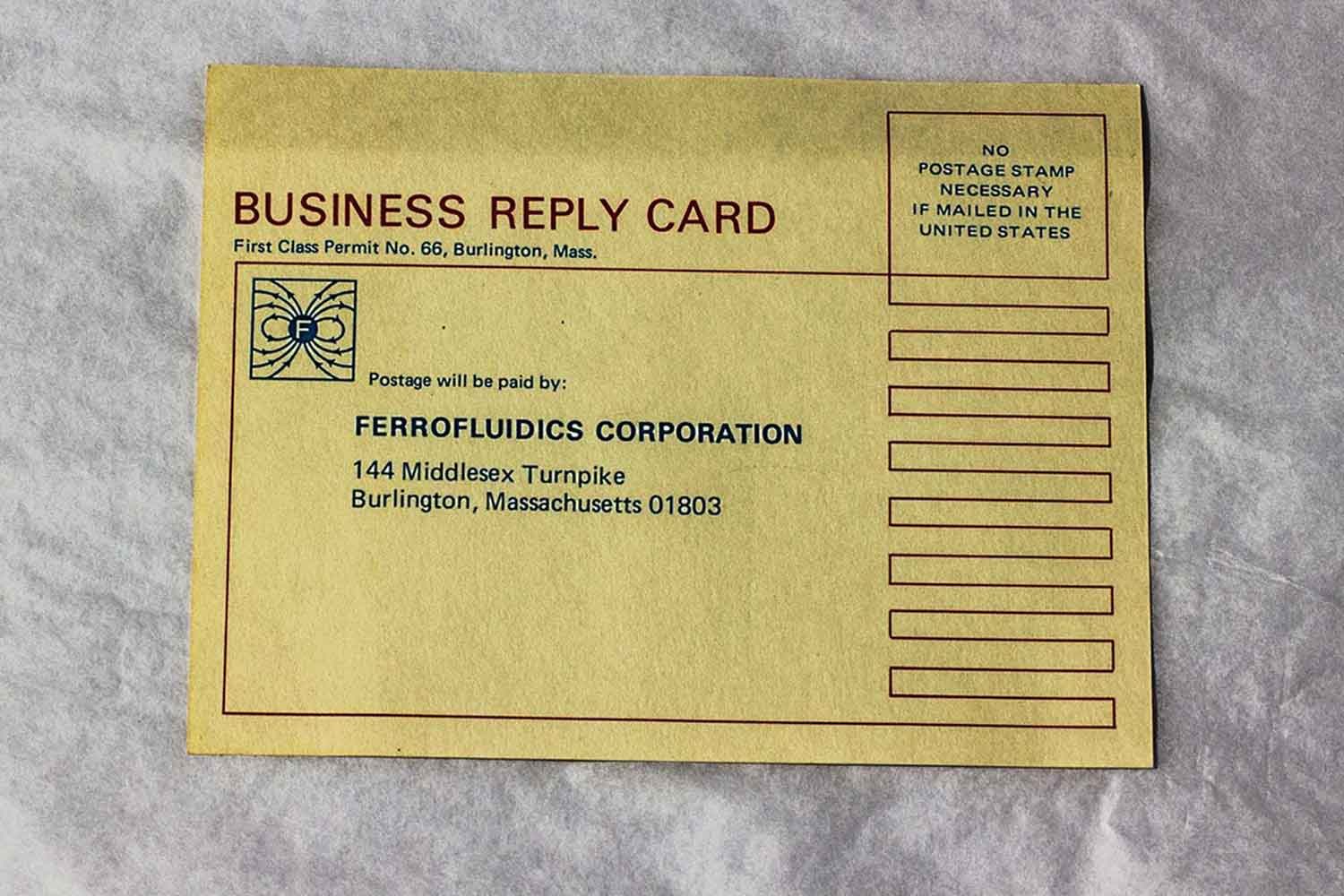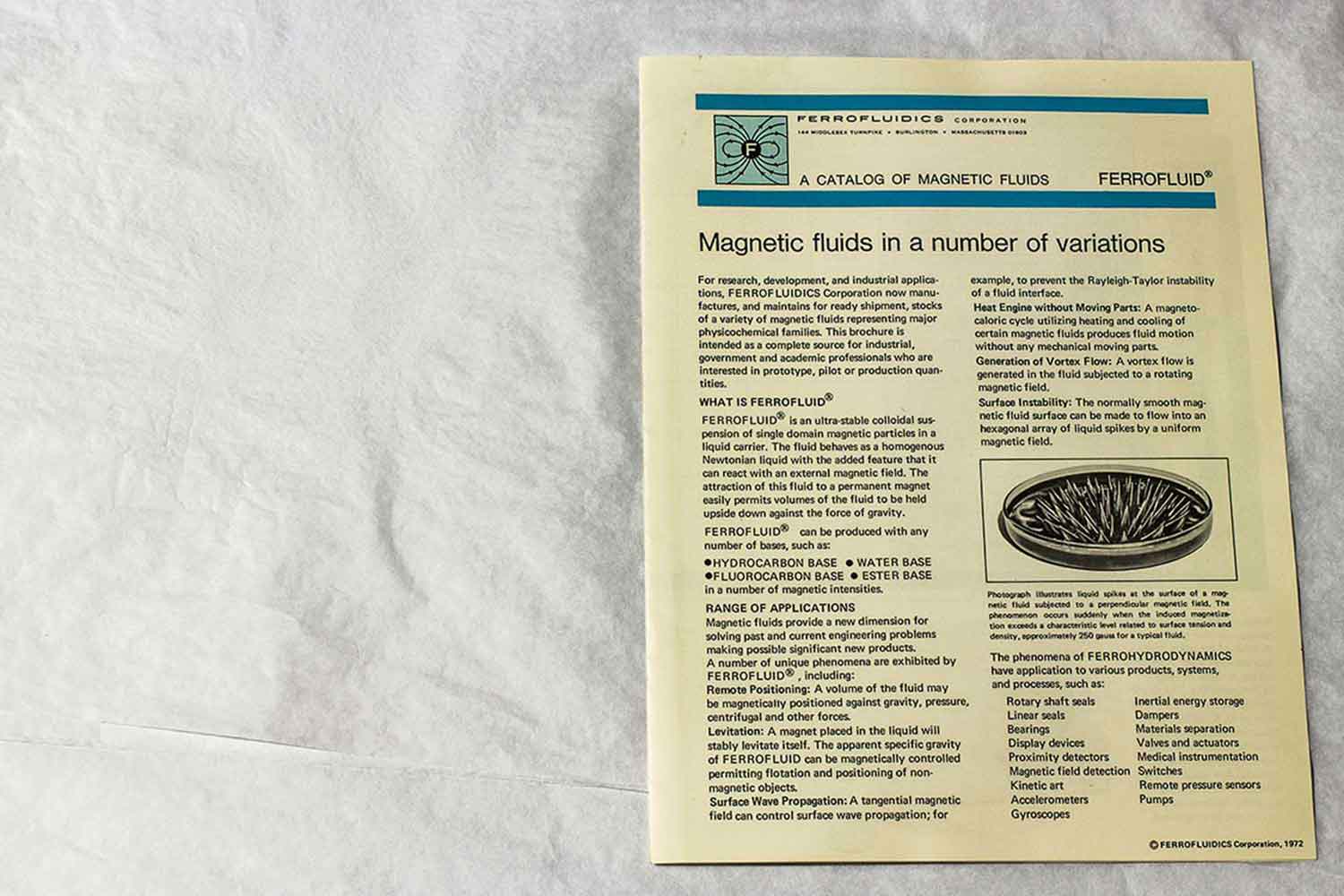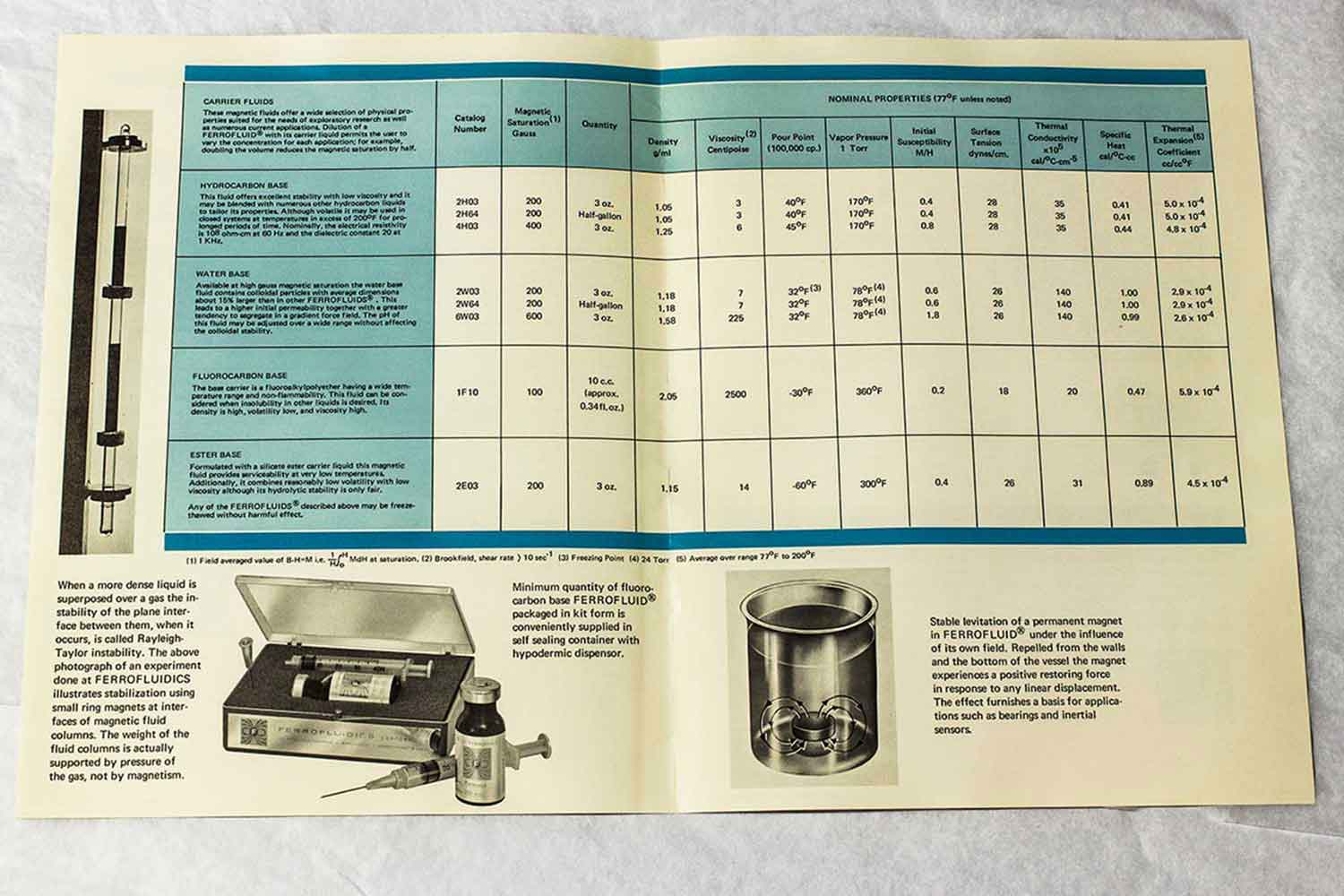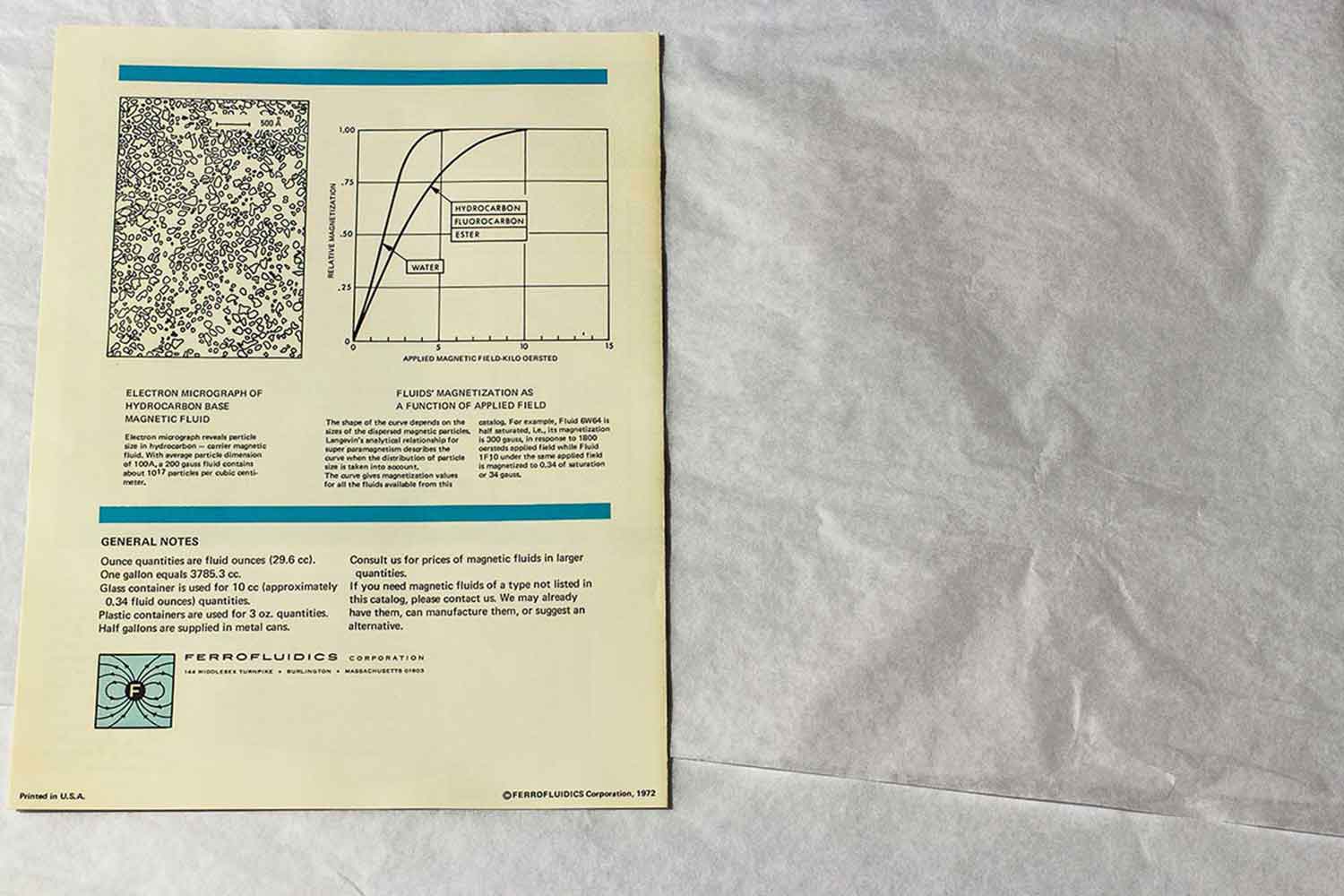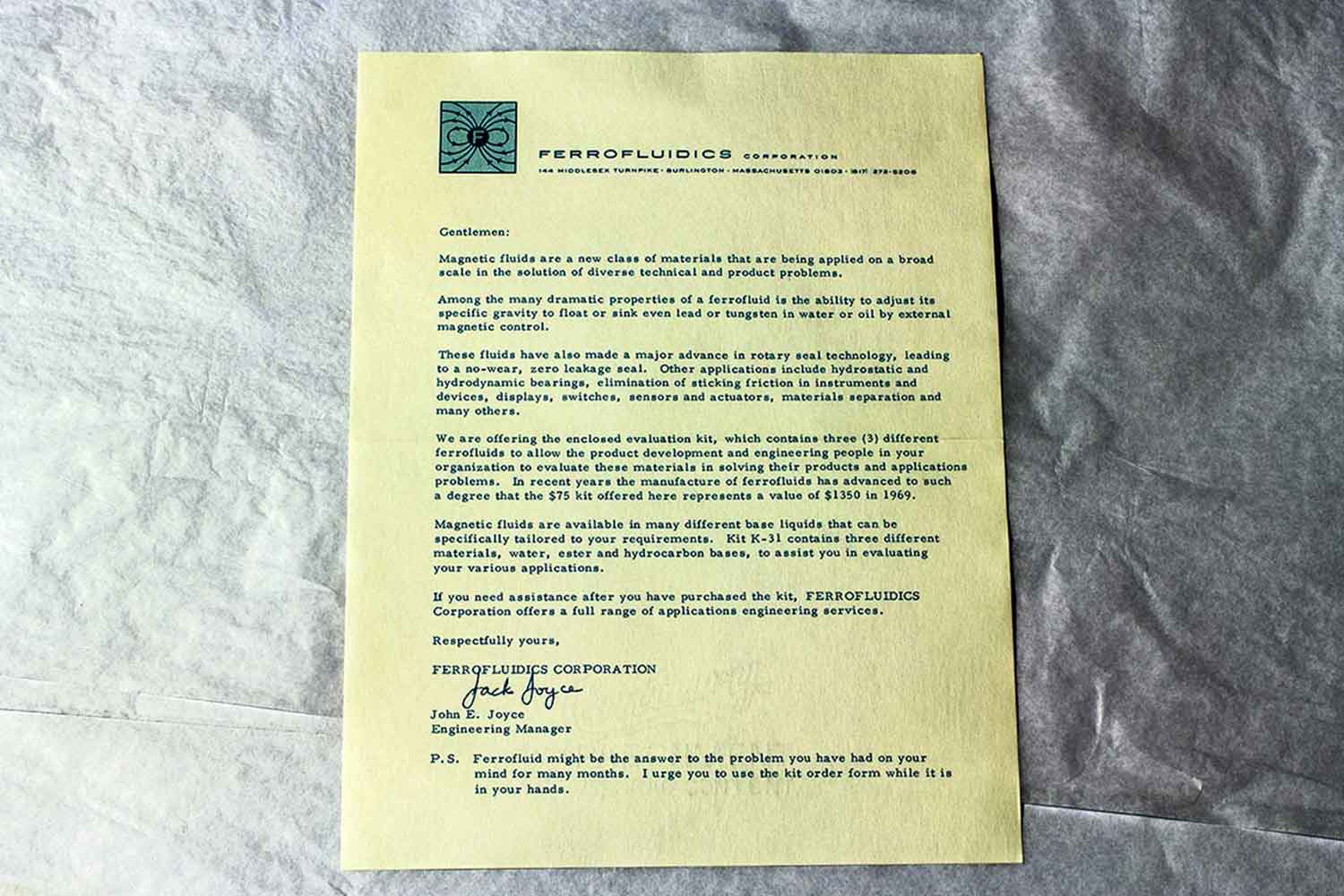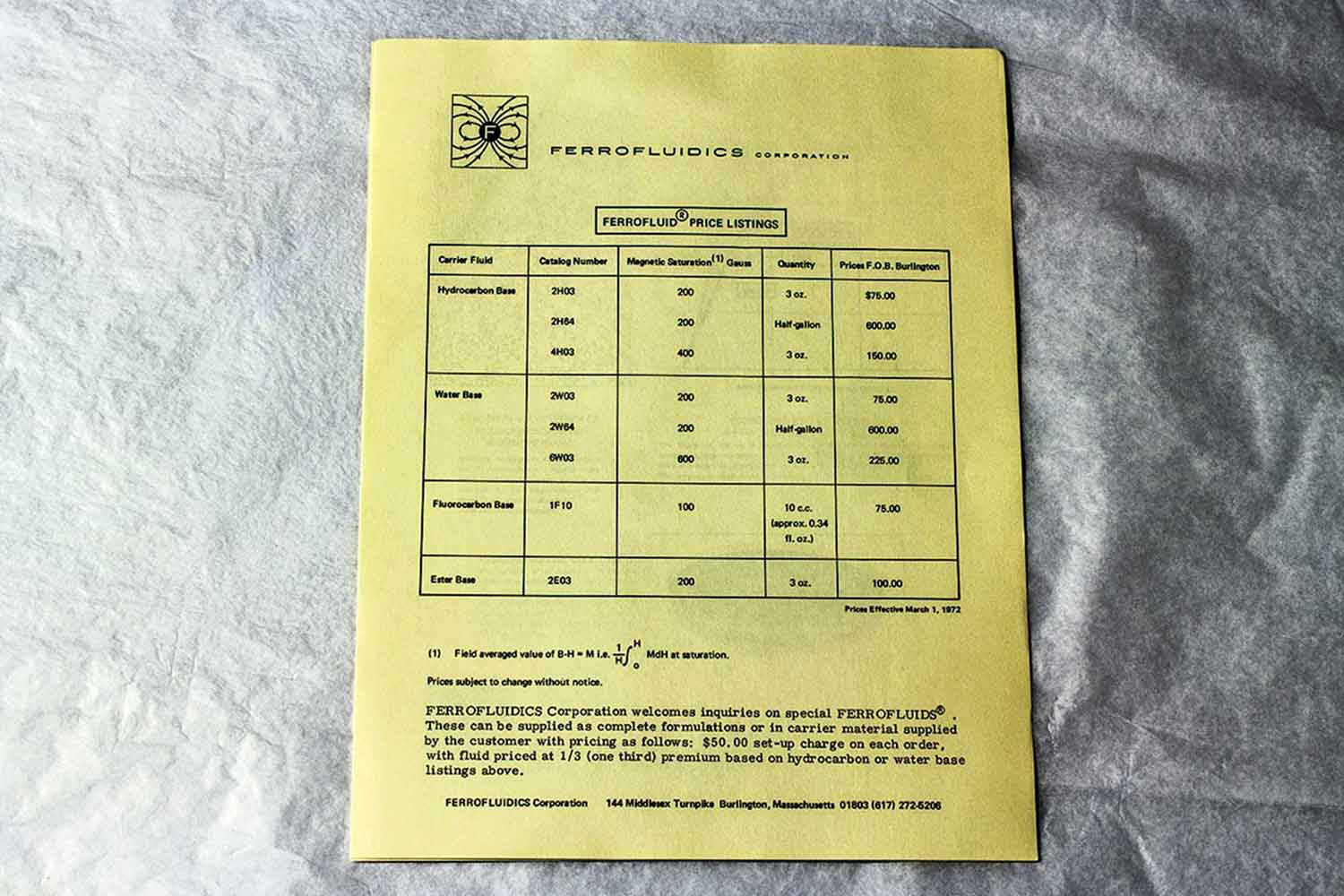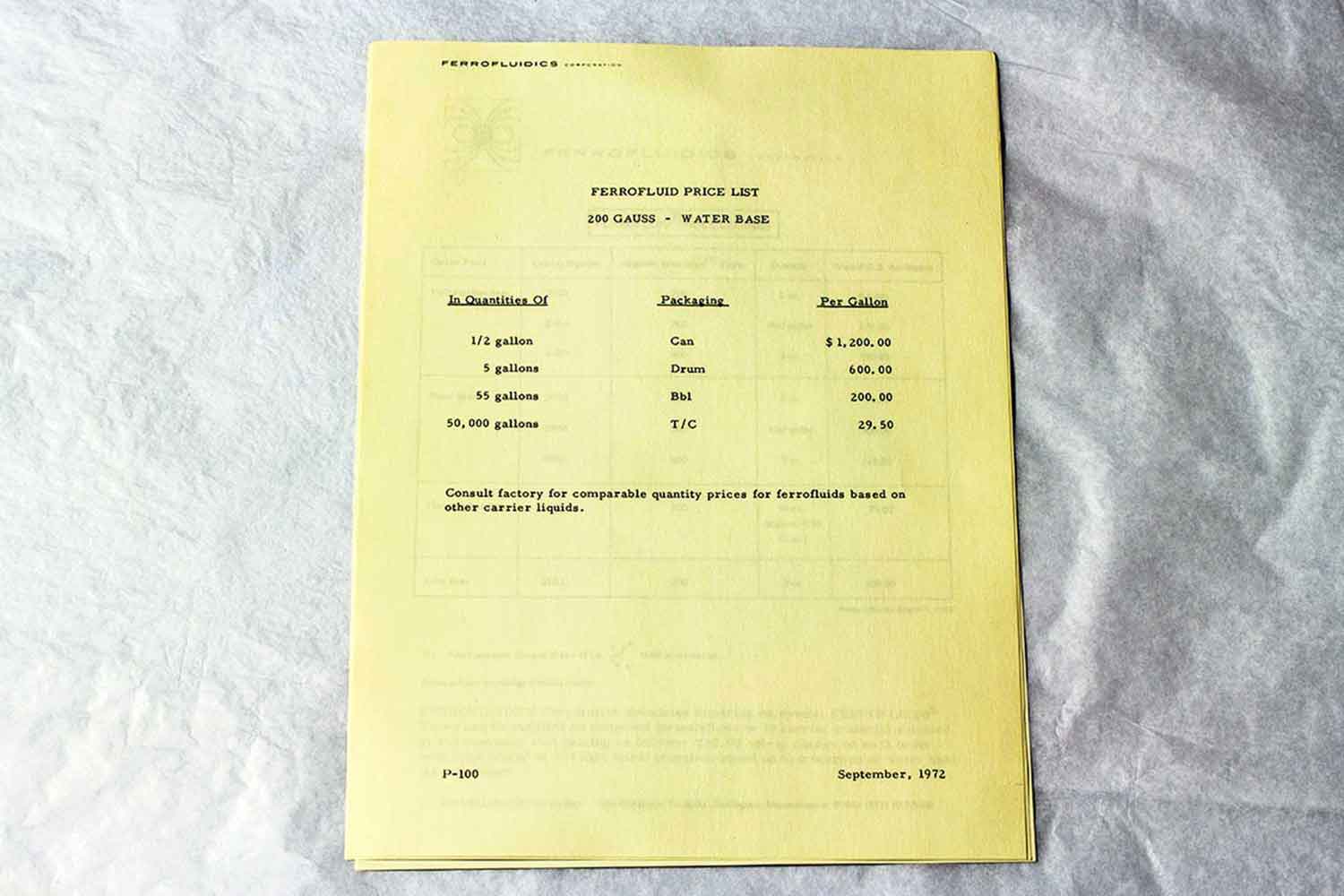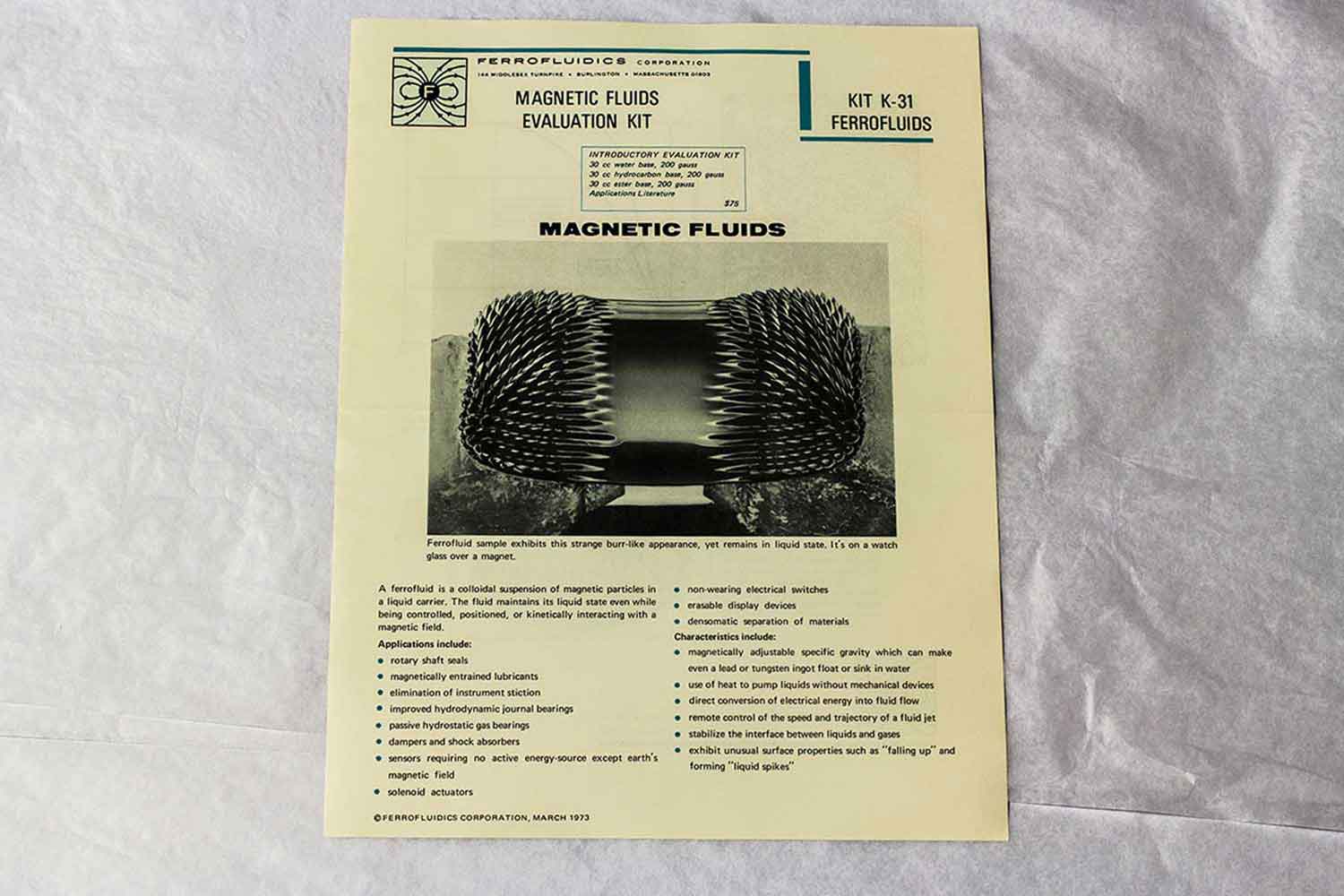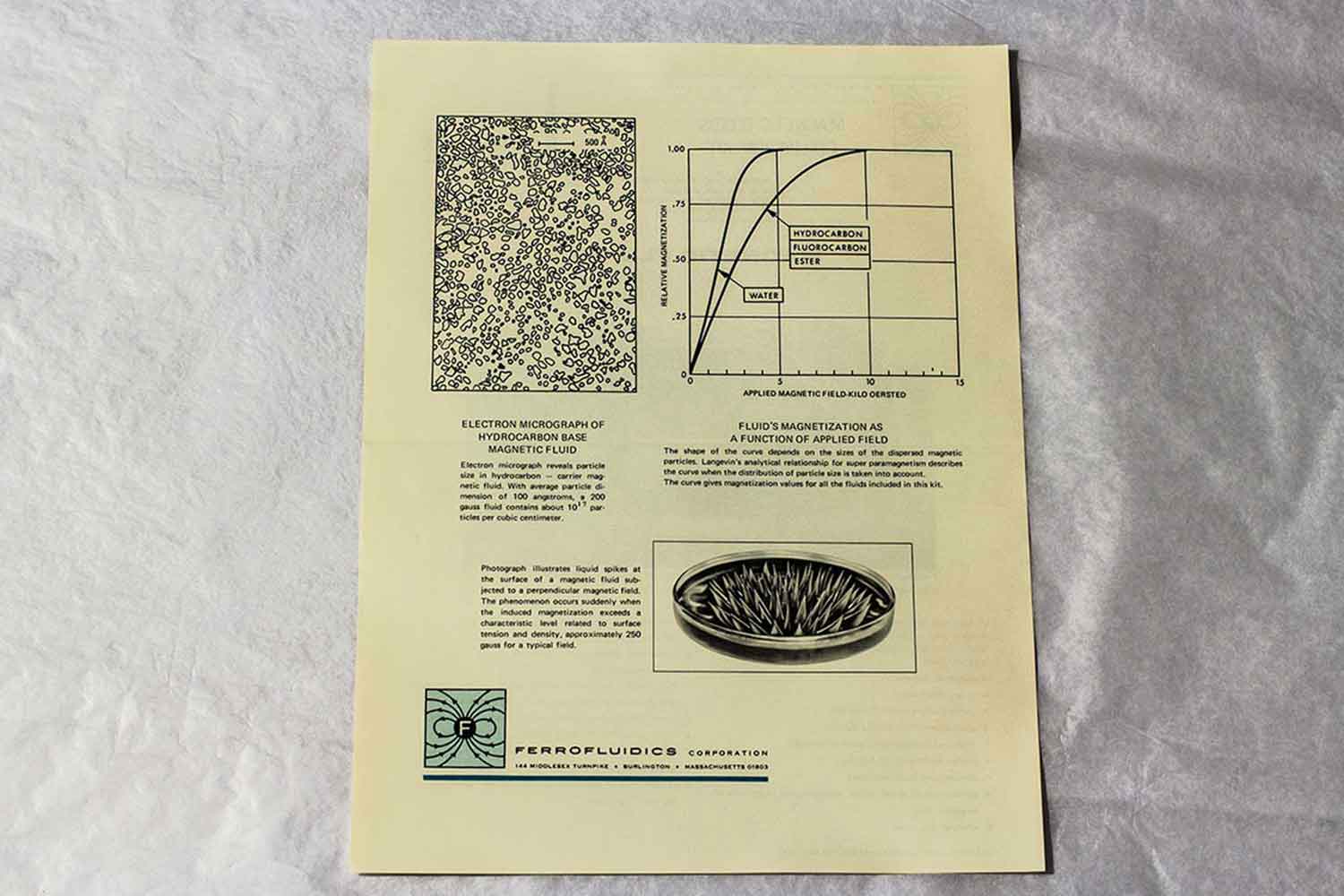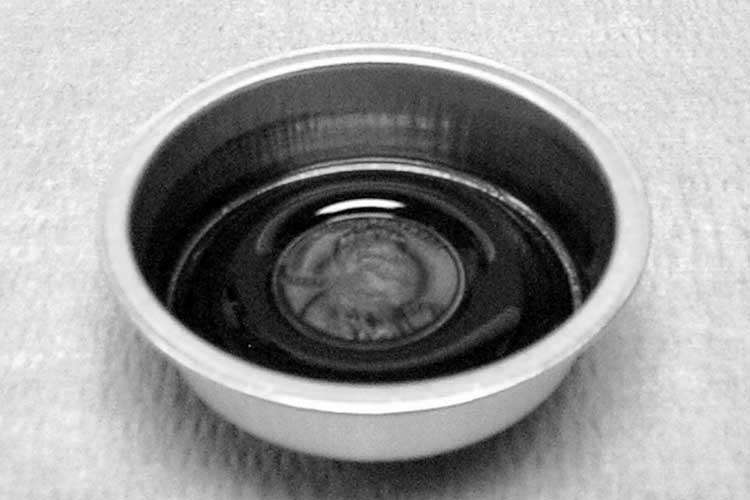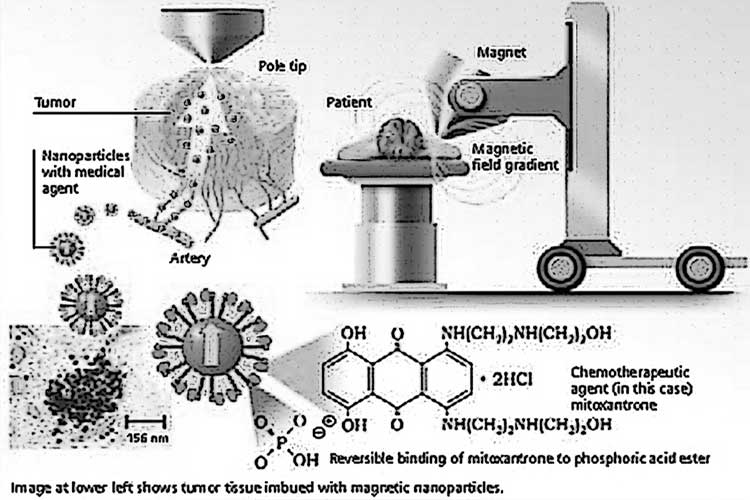Ferrofluid Chemistry
Ferrofluids are composed of three basic components, a) sub-microscopic, magnetically permeable particles of iron oxide, usually magnetite, b) a surfactant or dispersant coating and c) a carrier fluid.
The surfactants are soap-like materials that work to coat the particles and keep them from being attracted to each other. The carrier fluid may be water or oil, and will help to determine the over-all viscosity, or thickness of the ferrofluid.
The concentration of particles in a ferrofluid also contributes to the viscosity, but since this value is typically low, the nature of the carrier fluid has the greatest influence. The particle concentration also determines the “Saturation Magnetization” (Ms) of the fluid, or the degree to which it is attracted to a magnet. Ferrofluids are not magnetically attractive in themselves, they must be in a magnetic field in order to behave as one magnet.
Ferrofluid Behavior
Many of you may have seen commercials on television that show what looks like black oil taking on a life of its own, spiking up and dancing around. Perhaps you have seen videos on YouTube that look like magically dancing black fluid spiraling up and down, and wondered what it was. These were most likely ferrofluids, exposed to magnetic fields to make them “perform”.
Ferrofluid can be defined as a uniform mixture of magnetic particles, soap-like molecules and carrier fluid that will behave as a single unit in a magnetic field. In reality, the sharp spikes that appear are actually still fluid and are not solid points. The fluid behaves as one unit when the conditions are right, and magic apparently happens!!
Ferrofluid also exhibits an apparent change in density when exposed to a magnetic field. One of the favorite tricks for science demonstrations is the “floating penny” in which a ferrofluid will lift small items, such as non-magnetic coins, on their surfaces when in a reasonably strong magnetic field.
Ferrofluid Applications
For more than 40 years, the primary application for ferrofluids has been in loudspeakers for cooling, centering of the “voice coil” and smoothing of the sound produced from the electro-mechanical device that drives a speaker. The diagram below shows the speaker cut in half, so you can see where the fluid is applied.
Just a tiny amount of ferrofluid makes a huge difference for the quality of sound and the length of life of over 300 million speakers produced every year! Today the tiny speakers inside your cell phones, laptop computers, tablets and headphones or earbuds may contain ferrofluid – in tiny amounts!
Ferrofluid is also used inside mechanical devices called “vacuum rotary seals” and acts as a seal against moisture, dust and gases. The ferrofluid forms what we call a “liquid O-ring” and is exactly what it sounds like – a ring of fluid that seals a space and protects the moving parts of the device.
These seals are often found in clean rooms and robotic devices that perform functions that require free motion and protection from contamination by the environment outside their working parts. These seals allow us to produce components such as computer chips and memory cards that are flawless.
Ferrofluid for bio-medical applications is usually one of two types:
1) Magnetic Hyperthermia, where particles are injected into a tumor and then excited in a magnetic field to heat the tissue to a point where the tumor cells become weakened and vulnerable.
2) Targeted Drug Delivery, where drugs or antibodies and “targeting molecules” are attached to the nanoparticles and are injected into the blood stream, then guided by magnetic fields to the site of the tumor or lesion. Both of these methods cause little damage to the body, much less than some current standard therapies.
Ferrofluid for Science and Art
Ferrofluids have been used for science demonstrations and artistic displays for many years, because of their unique properties and the fascinating shapes they take when in a magnetic field. The images in this presentation were all made using Ferrotec ferrofluid in variously shaped containers and with magnets of different shapes and strengths. Ferrofluid has been used in commercial art, for executive desk displays and for images that are used on the pages of calendars, science texts and magazines.
The world is in love with these fun shapes, but they serve a valuable purpose as well, to help demonstrate some basic principles of magnetism. If you want to learn more about magnetism in general and ferrofluids specifically, there are many texts and websites devoted to information.
The links on the last page of this presentation are some sources to check in your study of magnetism and magnetic fluids.
Resources
+ FerroTec
https://ferrofluid.ferrotec.com/ferrofluid-home
+ Questions
If you have questions, please ask your teacher to contact Vanessa Rene at vrene@ferrotec.com
Historic 1973 Magnetic Fluids Engineering Kit
